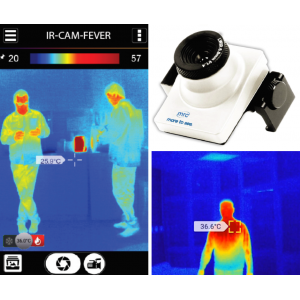Your shopping cart is empty!
Categories

Readip - Portable Rapid Test Reader
READIP is a lightweight and portable rapid test reader and the ultimate tool for the qualitative analysis of Unisensor‘s dipstick tests. A laboratory in a small cube of only 4 cm sides. Use it on a truck or in the field. Wherever you need it! Price is 400 EUR!! ..
Featured
Infrared Thermal Camera
Price:
0.00€
Infrared Sensor Thermal Camera for Temperature Check
Definition: Infrared thermography is the science of detecting infrared energy emitted from an object, converting it to apparent temperature, and displaying the result as an infrared image.
Imager: 384 x 288 microbolometer LWIR 7.5 -14um
Optics: 6.8mm lens (55° x 41°). Other lenses available.
Accuracy & Sensitivity: Up to +/-1°C @ target temperature NETD <0.07°C
Operating Temperature: -10°C to +50°C
Minimal Requirements: Android 8 and above, supporting USB OTG
Zoom: Continuous digital zoom using touchscreen
Focus: Manual, 0.2m to infinity
Updates: Periodic updates from MRC website
Thermal imaging processes an image based on all the energy emitted off objects in the field of view. This will include a person, hot air from a heater, a computer or a cool gust of wind from an air conditioner.
Unlike a thermometer – which measures absolute temperature – a thermal imager will show the temperature in relative terms. As in – what is my temperature relative to the person next to me.
To do this we need to establish the baseline temperature, either with a black body, or by using three healthy individuals as described in the setup instructions. Once we’ve established that baseline, we the
temperature gradient can be measured very accurately.
The optimal range for a 6.8 millimeter lens on the camera is 2 meters. It can be used effectively up to 5 meters, but it’s important to make sure the temperature of a person is measured at the exact distance that the baseline was established. If your setup is designed to read temperatures of people at 3 meters, for example, make sure that it was calibrated during the setup for people at that range.
Write a review
Your Name:Your Review: Note: HTML is not translated!
Rating: Bad Good
Enter the code in the box below:
Specials




-160x160.jpg)









 (
(